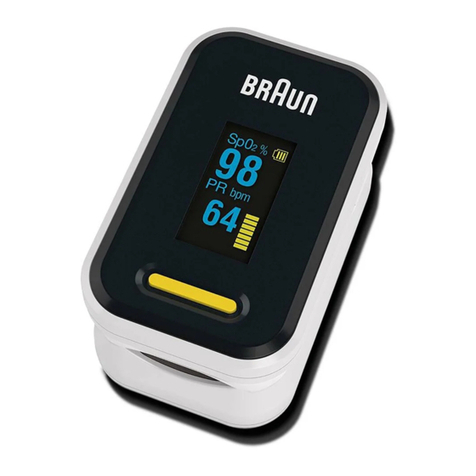D521-Manual_EN_Rev07 2017_05_26 Page 2 of 31
Table of Contents
Content Page
Table of Contents........................................................................................................................................................2
1Technical Specifications....................................................................................................................................3
2Description .........................................................................................................................................................4
2.1 Function ......................................................................................................................................................4
2.2 Display and Operating Elements.................................................................................................................4
2.3 Display ........................................................................................................................................................4
2.4 Status LEDs.................................................................................................................................................4
2.5 Functions during normal operation..............................................................................................................4
2.6 Event Codes on Display..............................................................................................................................4
2.7 Measuring Principle.....................................................................................................................................5
2.8 Performance at Signal Break.......................................................................................................................5
2.9Signal Input V-Path (volts) Terminal 14........................................................................................................5
2.10 Signal Input mV-Path (millivolts) Terminal 15 ..............................................................................................5
2.11 Sensor monitoring.......................................................................................................................................5
2.12 Reserved.....................................................................................................................................................5
2.13 Alarms.........................................................................................................................................................6
2.14 Analog Output (D521.10, D521.12, D521.14)..............................................................................................6
2.15 Signal Pulse Output 1..................................................................................................................................6
2.16 Signal Pulse Output 2..................................................................................................................................6
3Model No. Code..................................................................................................................................................7
4Parameters .........................................................................................................................................................8
4.1 Summary of parameters and their default values as set on delivery...........................................................8
4.2 Setting the Parameters via RS232-Interface...............................................................................................9
4.3 Setting the parameters via Front Keyboard...............................................................................................10
5Description of Parameters and their Settings ...............................................................................................11
5.1 Default Values at delivery..........................................................................................................................21
6Installation........................................................................................................................................................22
7Safety Notes for Installation and Operation...................................................................................................23
7.1 Safety Notes for Installation.......................................................................................................................23
7.1.1 General Instructions..........................................................................................................................23
7.1.2 EMI...................................................................................................................................................23
7.1.3 Safety Notes for Operation...............................................................................................................23
7.2 Safety Notes for SIL2 Speed applications in hazardous areas..................................................................24
7.2.1 Monitoring the Speed Signal.............................................................................................................24
7.2.2 Use of alarms SP1 to SP4................................................................................................................24
7.2.3 Monitoring the Speed during operation.............................................................................................24
7.2.4 Safety Notes for Standstill alarm SP3...............................................................................................24
7.3 Dimensions................................................................................................................................................25
7.4 Function diagram and connections of D521..............................................................................................26
7.5 Connections of measuring signals to input................................................................................................27
7.6 Connection of BRAUN sensors.................................................................................................................28
7.7 Connection of A5S1.. with D461 to D521 ..................................................................................................29
8Safety Data........................................................................................................................................................30
8.1 Safety Data of Measuring Chain D521-A5S0 resp. D521-D461-A5S1......................................................30
9Revision notes..................................................................................................................................................31





























